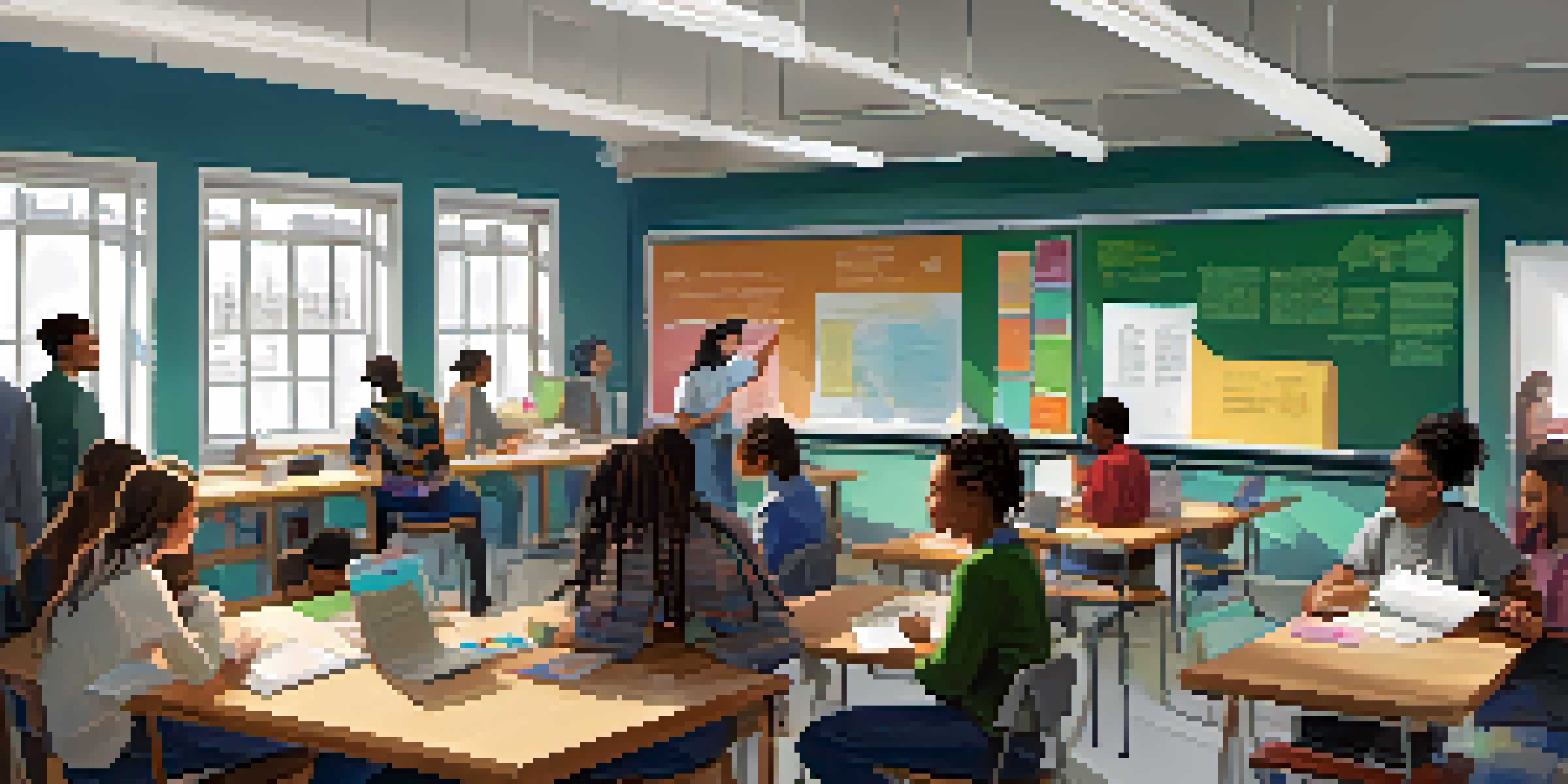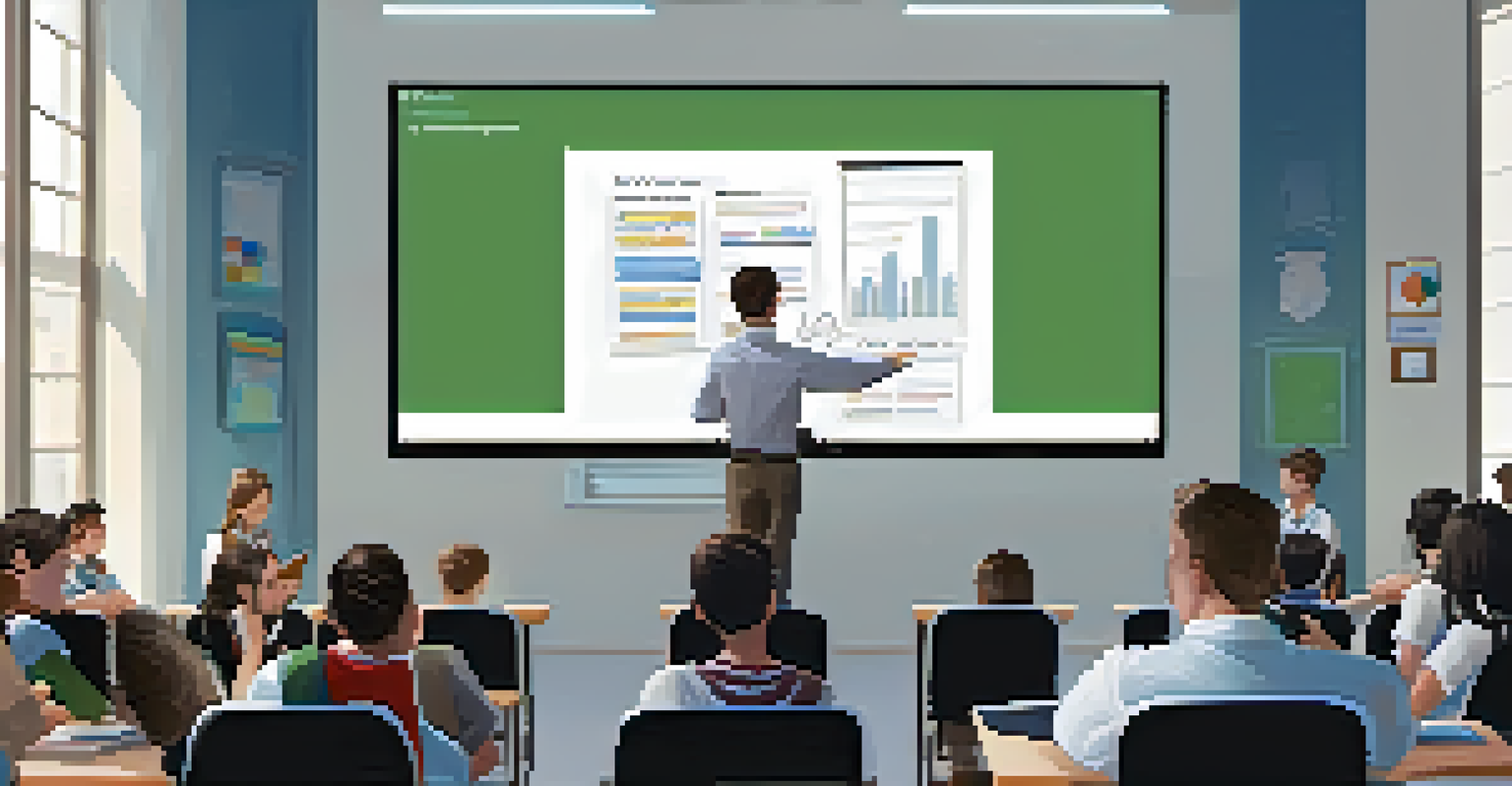Flipped Classroom: Preparing for Future Educational Trends

Understanding the Flipped Classroom Model
The flipped classroom model is an innovative approach to learning where traditional lecture and homework elements are reversed. Instead of students sitting through lectures in class and completing assignments at home, they view lecture materials online before class. This allows for a more interactive classroom experience where teachers can focus on engaging students through discussions and hands-on activities.
The most important thing in communication is hearing what isn't said.
Imagine a cooking class where students watch a video of the recipe being prepared at home, and then come to class ready to cook together. This model empowers students to learn at their own pace, allowing them to revisit complex concepts as needed. In essence, it shifts the focus from teacher-led instruction to student-centered learning.
As we explore the future of education, understanding the flipped classroom is essential for educators aiming to enhance student engagement and comprehension. This approach not only maximizes classroom time but also fosters a deeper connection between students and the material.
The Benefits of Flipped Classrooms for Students
One of the most significant advantages of the flipped classroom model is that it accommodates various learning styles. Students can pause, rewind, and replay video lectures, ensuring they fully grasp the material before moving on. This flexibility caters to diverse learners, promoting inclusivity in the classroom.

Additionally, because students arrive at class prepared, teachers can dedicate more time to collaborative projects and discussions. This shift fosters critical thinking and problem-solving skills, essential for success in the modern world. Students often report feeling more engaged and motivated when they can actively participate in their learning process.
Flipped Classrooms Foster Engagement
This model allows students to prepare at their own pace, leading to more participation and interaction during class.
Moreover, the flipped classroom promotes self-directed learning, equipping students with the skills to take charge of their educational journey. With greater control over their learning pace and style, students become more invested in their education, leading to improved outcomes.
Challenges and Considerations for Educators
While the flipped classroom model presents exciting opportunities, it also comes with its own set of challenges. One primary concern is ensuring all students have access to the necessary technology at home. Without reliable internet or devices, some students may struggle to engage with the pre-class materials, leading to disparities in learning.
Education is not the filling of a pail, but the lighting of a fire.
Educators also need to invest time in creating quality content for their students. This could mean producing engaging videos or curating resources that truly resonate with learners. It requires a shift in how teachers view their role, moving from information deliverers to facilitators of learning.
Finally, teachers must be prepared to adapt their classroom strategies continually. The success of a flipped classroom relies heavily on ongoing feedback and adjustments to meet the needs of all students, making it essential for educators to remain flexible and open-minded.
Integrating Technology in the Flipped Classroom
Technology plays a crucial role in the success of the flipped classroom model. From video lectures to interactive quizzes, various digital tools can enhance the learning experience. Platforms like YouTube, Edpuzzle, and Google Classroom provide educators with the means to create engaging content and track student progress efficiently.
Moreover, educational software can facilitate collaboration among students, allowing them to work together on projects even outside of class. This fosters a sense of community and teamwork, skills that are vital in today's interconnected world. By leveraging technology, teachers can create a dynamic and participatory learning environment.
Technology Enhances Learning
Utilizing digital tools like video lectures and interactive quizzes can significantly improve the learning experience in flipped classrooms.
However, it's essential to choose tools that align with teaching goals and student needs. Educators should focus on user-friendly platforms that enhance learning rather than complicate it, ensuring that technology serves as a bridge rather than a barrier.
Real-Life Examples of Flipped Classrooms
Many schools and educators around the world have successfully implemented the flipped classroom model, showcasing its effectiveness. For instance, a high school in California flipped its science classes, resulting in improved test scores and increased student participation in discussions. Teachers reported that students came to class prepared and eager to engage with complex topics.
Another example comes from a university that adopted the flipped approach in its introductory courses. By providing lecture materials online, professors could dedicate class time to group projects and case studies, leading to a deeper understanding of the subject matter. Students appreciated the opportunity to learn actively rather than passively.
These success stories highlight the potential of the flipped classroom to transform traditional educational practices. As more educators explore this model, we can expect to see innovative approaches that prioritize student engagement and learning outcomes.
Preparing for the Future: Teacher Training and Support
For the flipped classroom model to thrive, it’s crucial to provide adequate training and support for educators. Professional development programs can equip teachers with the skills they need to create effective flipped lessons and utilize technology effectively. This investment in teacher training can lead to more successful implementation and better outcomes for students.
Mentorship and collaboration among educators can also play a vital role in the transition to a flipped classroom. Sharing best practices, resources, and experiences can help teachers refine their approach and build confidence in this new teaching model. Schools should foster a culture of collaboration to enable this exchange of ideas.
Teacher Support is Essential
Adequate training and collaboration among educators are crucial for the successful implementation of the flipped classroom model.
By prioritizing teacher support and development, institutions can pave the way for a successful shift towards flipped classrooms, ensuring that both educators and students are prepared for the challenges and opportunities of modern education.
Looking Ahead: The Future of the Flipped Classroom
As we look to the future, the flipped classroom model is likely to evolve further alongside educational technology advancements. Innovations like virtual reality and artificial intelligence could enhance the flipped experience, offering personalized learning paths and immersive environments. This could enable students to explore subjects in ways we can only imagine today.
Additionally, the increasing emphasis on social and emotional learning may influence how the flipped classroom is designed. Educators might incorporate mindfulness practices and emotional intelligence training into their lessons, creating a holistic approach to education. This evolution will be crucial in preparing students for a rapidly changing world.

Ultimately, the flipped classroom represents a shift towards a more student-centered approach that prioritizes engagement and understanding. By embracing this model, educators can better prepare students for the future, equipping them with the skills they need to thrive in both academic and real-world settings.